Parsley vs. cilantro is the name of the game. Let’s delve into everything you could need to know about two favorite ingredients for livening up gourmet and simple meals.
Read on to learn how to grow, store, and consume your herbs while enjoying the many benefits of parsley vs. cilantro.
Parsley vs. Cilantro: What Does Parsley Look Like?

While many think that parsley is a perennial herb, these plants are biennials and come back after two growing seasons. In contrast, cilantro is an annual herb, but both cilantro and parsley include significant health benefits.
Parsley and cilantro look similar, but their leaves help to tell them apart. Cilantro leaves have a more lacy appearance that can give the impression of being delicate. In contrast, parsley leaves are usually a slightly darker shade of green, are pointier, and are less round than cilantro leaves.
How to Grow Parsley and How to Grow Cilantro Indoors
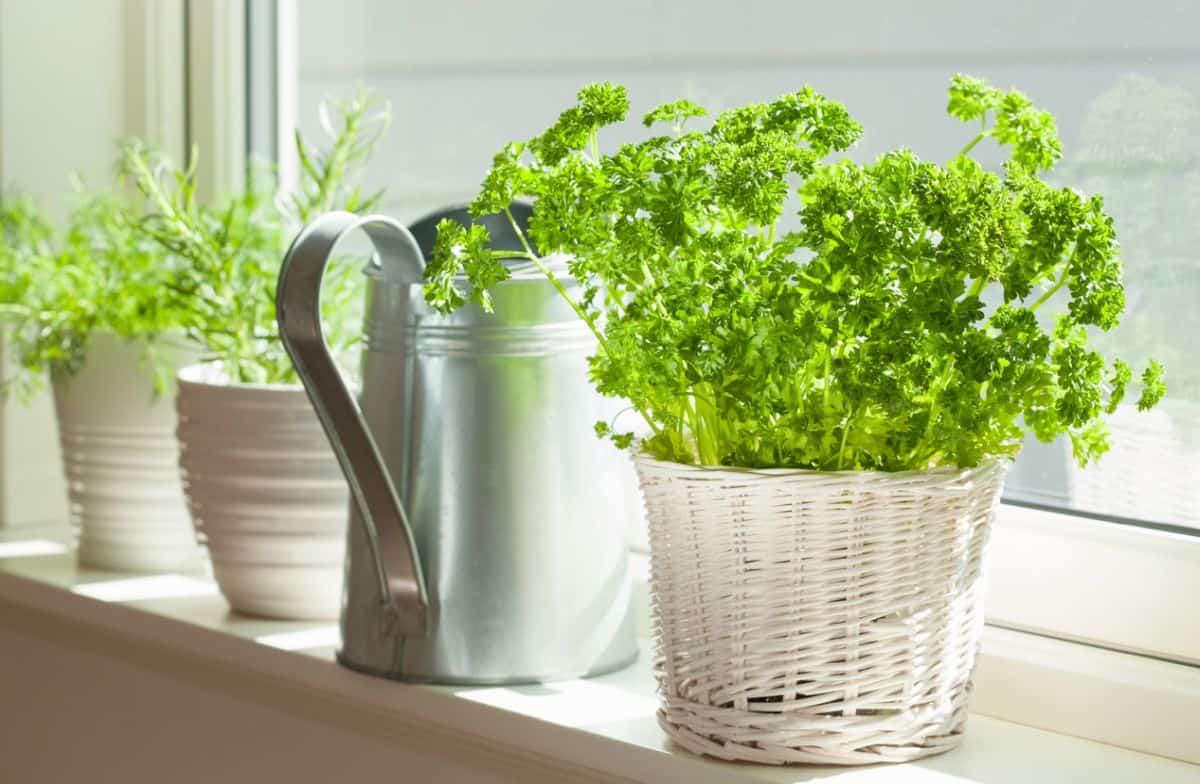
Cilantro is a cool-weather plant that you can start indoors at any time of the year. Cilantro leaves are often ready for harvest within 3-4 weeks and seeds within 6-7 weeks.
Replant fresh seeds every few weeks or allow the seed pods to mature and naturally re-seed the plant. Cilantro plants usually prefer full sun, but it may be best to shield your cilantro from the afternoon sun if the climate is hot.
When parsley is grown indoors, it needs regular harvesting to keep the plant’s height in check. Parsley can grow up to 3 feet high, depending on the variety, so pick a type that is flavorful and that you enjoy!
Parsley seeds are planted directly into a pot, covered with a thin layer of soil, and kept moist until they sprout.
How to Harvest Cilantro and How to Harvest Parsley
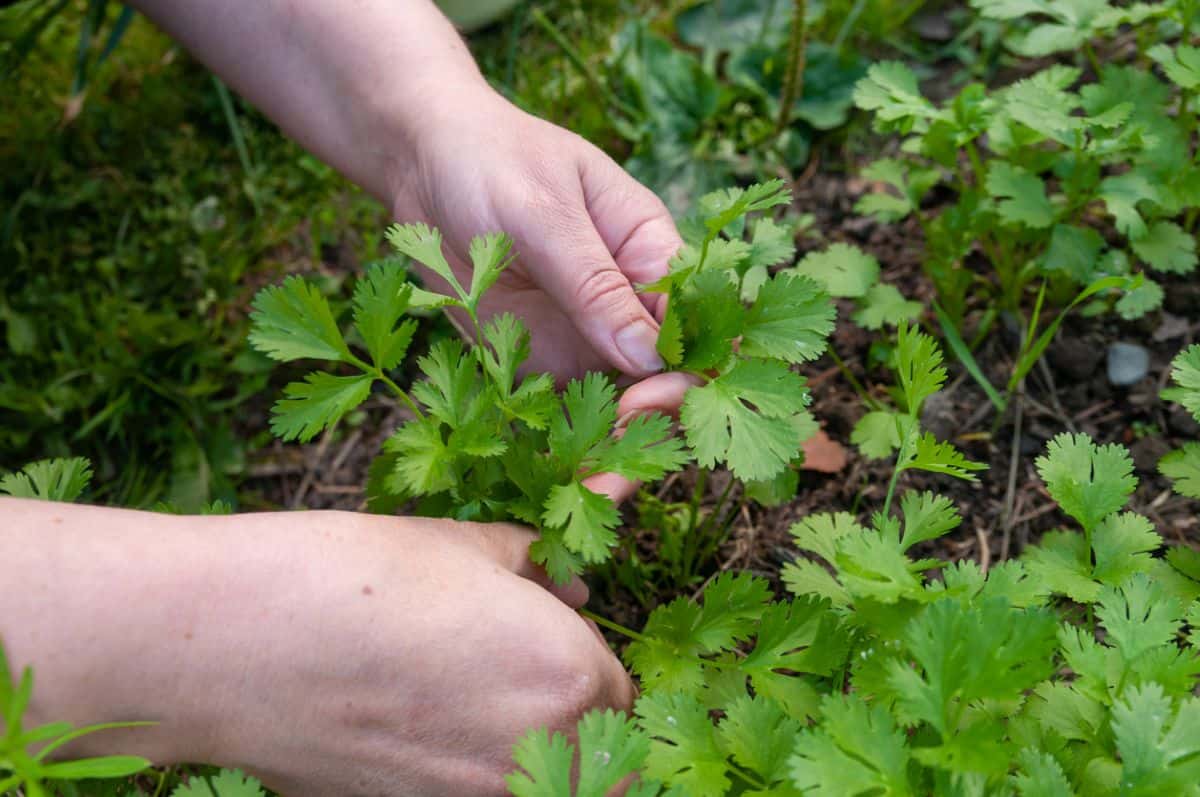
To encourage your parsley plant to grow back as much as possible, harvest the entire stem of the parsley but cut it close to the dirt or pot. Individual cilantro leaves can be harvested as needed or wait until the plant blooms and green seed pods mature into brown seeds. To remove the seeds, wait until most of them are brown before cutting off the seed heads and hanging them upside down to dry.
Parsley vs. Cilantro: Uses in Cooking
Some connoisseurs say that cilantro has a spicy or peppery flavor, while others will swear that it is more like soap. Similarly, even food experts will debate whether cilantro’s counterpart parsley tastes more like mint or celery.
What Does Parsley Taste Like? Is Cilantro Spicy?
Out of the two herbs, parsley is more common as it tastes fresh and mild while still retaining some of its herbaceous characteristics. Parsley differs from cilantro in that retaining most of its flavor even after it’s cooked and can both brighten up dishes and complement other fresh ingredients like garlic or lemon.
In contrast, cilantro’s flavor is much stronger than the taste of parsley and sometimes is reminiscent of citrus fruits. The fresh, spicy taste is a perfect complement to many ethnic dishes. A citrusy flavor profile infuses and melds with other ingredients and brings cooking to life, like the avocado salad with ahi tuna.
How to Cut Parsley and How to Chop Cilantro
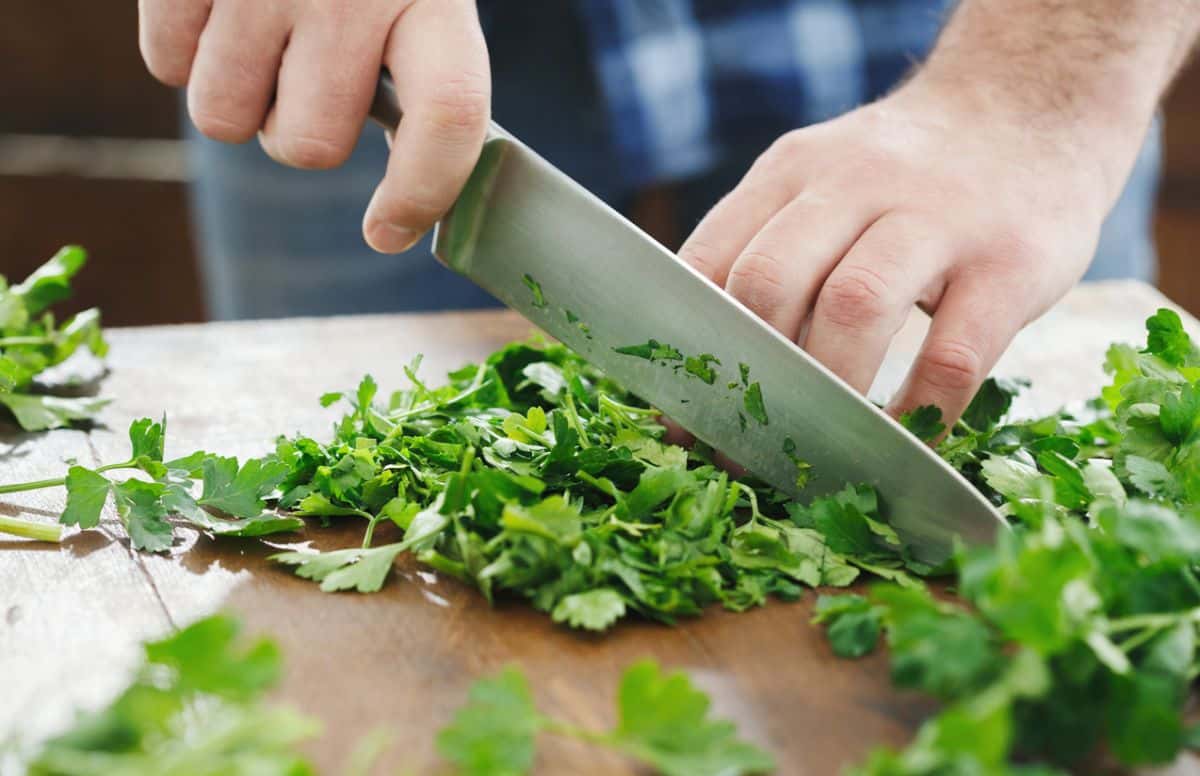
It is essential to prepare parsley and cilantro just right. Rather than remove the stems, leave them on and chop them up with the rest of the herbs.
Make sure the tip of the knife does not leave the cutting board. Begin to press down on the k using your free hand while making a rocking motion. Carry on using the rocking motion while moving up and down the bunch of herbs until chopped evenly. You may need to adjust or reset your herb bundle periodically to ensure that they are cut consistently.
Popular Recipes
Parsley is frequently recognized for its use in cooking, often adding a burst of color as a garnish to many dishes. However, parsley is also a star in its own right, as a source of antioxidants and a staple in many detox programs.
Many traditional dishes, including Mexican and Asian recipes, include cilantro. It is no surprise that cilantro makes an exceptional addition to many rice pilaf recipes. The flavor of cilantro makes it a great match to pair with a lime flavor. Lime itself is a signature feature found in many Mexican and corn-based dishes.
Is Parsley Good for You? Is Cilantro Good for You?
Parsley and cilantro are both low-calorie herbs that include many nutrients. A regular serving of either herb contains a full day’s requirement of vitamin K, which helps with blood clotting and bone health. In addition, both parsley and cilantro also are rich in phenolics, which are compounds that protect cells and DNA from damage.
Pets, Parsley, and Cilantro
Parsley and cilantro are commonly used ingredients for human consumption but leave many wondering about their pets. Whether you own a guinea pig or a dog, these two herbs have different implications for owners of pets, big and small.
Can Guinea Pigs Eat Parsley? What About Rabbits?
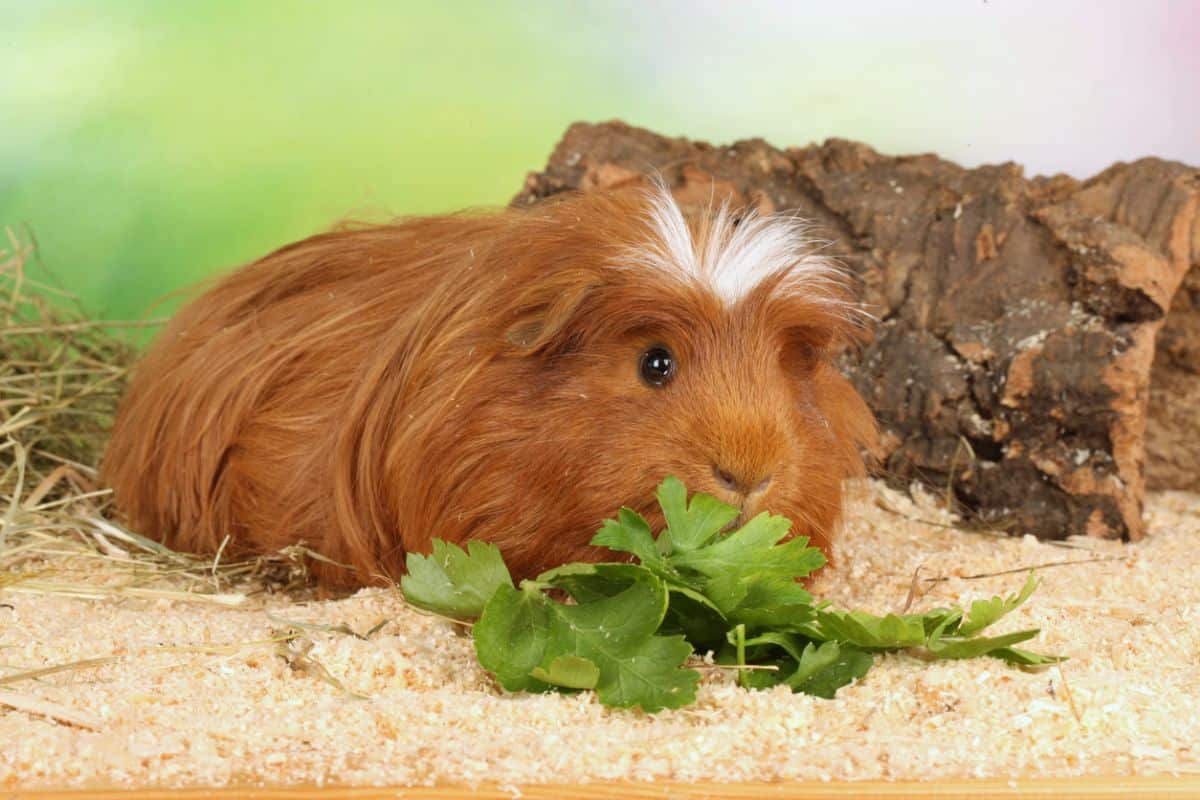
Guinea pigs can eat parsley and cilantro safely, but they should only enjoy these herbs as occasional treats. Most guinea pigs enjoy parsley, which is rich in Vitamin C but contains a lot of calcium and oxalic acid. These oxalates can cause urinary tract issues in your pet.
Similarly, rabbits can enjoy parsley in moderation, but cilantro is safe enough for bunnies to eat every day. Cilantro is rich in fiber and antioxidants that help maintain your pet’s digestive health.
Can Bearded Dragons Eat Cilantro? Do Baby Iguanas Eat Cilantro?
Herbs, including parsley and cilantro, are good for baby iguanas although some, like parsley, need to be used as occasional treats. The oxalic acid present in parsley and cilantro can harm baby iguanas, similar to guinea pigs, if they eat these herbs too often they can block the absorption of the calcium your pet needs.
Bearded dragons can eat fresh cilantro occasionally to benefit from vitamin K and the other minerals it includes. They can also consume parsley, although more rarely since the oxalates can prevent your pet from properly retaining and storing calcium.
Can Dogs Eat Cilantro and Parsley?
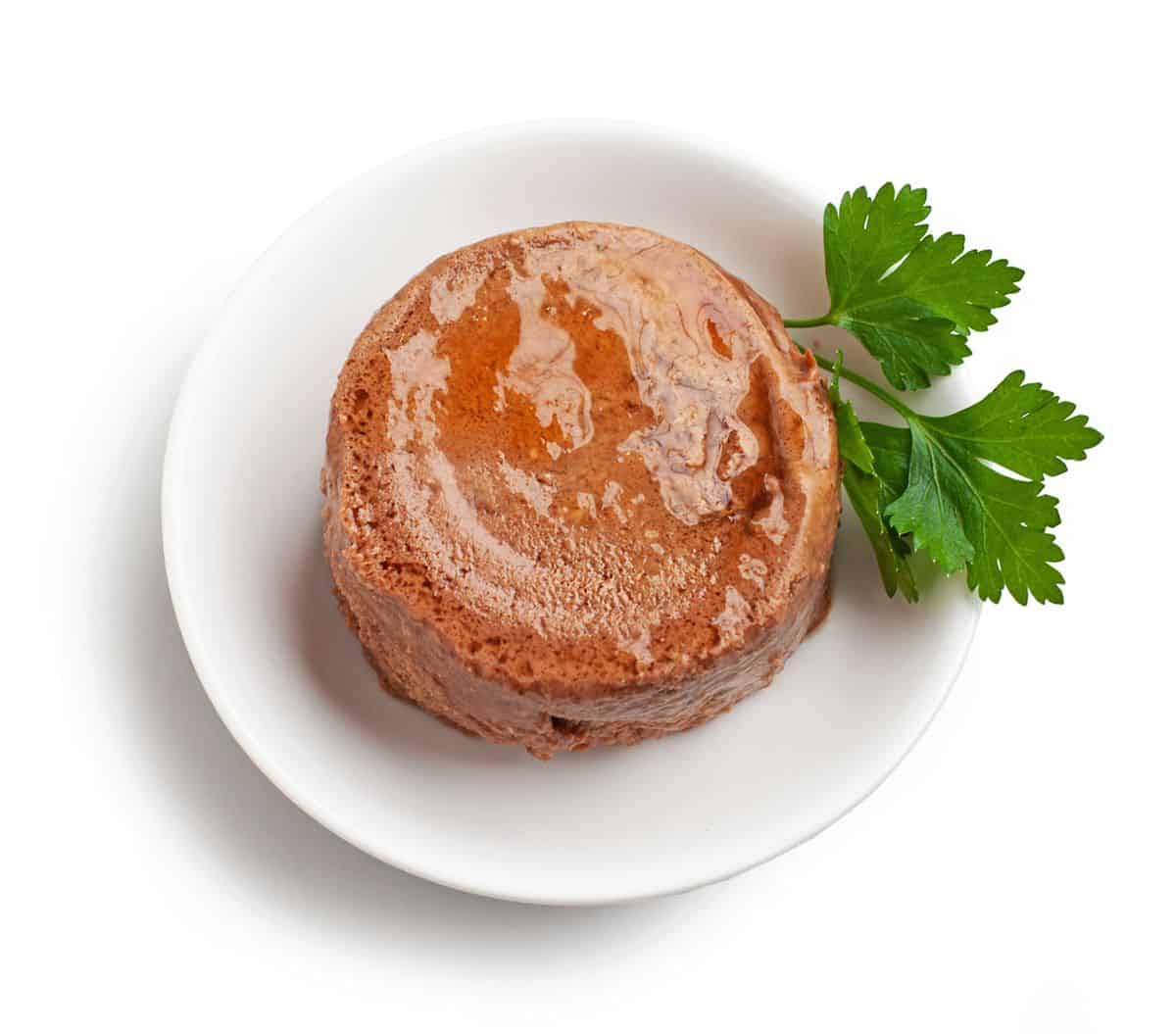
The good news is that cilantro can be a healthy treat for your pooch. The nutrient-dense herb contains minerals that your dog needs and can be given to them from time to time as an occasional treat.
You only want to feed your dog the curly-leafed variety of parsley. Spring parsley contains large quantities of furanocoumarin which is toxic to dogs and can lead to blindness. All parsley contains furanocoumarin, however, the curly-leafed varieties of parsley contain smaller amounts that can be ingested safely by your dog.
FAQs
With broad uses for humans and pets alike, it can seem like there is no end to the questions you might have about cilantro and parsley. These frequently asked questions dig into the gritty details of your lingering cilantro and parsley questions.
How to Store Parsley and Cilantro by Drying?
When drying any herbs keep the temperatures low (approximately 95 degrees Fahrenheit) to help preserve the flavorful oils contained in the herbs. To dry parsley or cilantro you can choose to use a dehydrator, hang them to dry or attempt drying in the oven, although this last method may be too hot depending on your appliances.
To hang dry parsley and cilantro, make sure your herbs have enough stem that they can be bunched together and hung. Tie your bunch(es) together with twine or a rubber band and hang them in a cool, dark place that gets lots of airflows. Check your herbs while they are hanging to make sure they are getting enough air and, after about a week, they should be fully dry.
Is Coriander the Same as Cilantro?
Coriander and cilantro come from the same plant whose Latin name is Coriandrum sativum. The name of the herb can vary from region to region, but cilantro generally refers to the plant’s leaves and stems. Coriander, on the other hand, is more variable but often refers to the seeds of the Coriandrum sativum plant. When it gets confusing is in regions where cilantro is coriander, and coriander is then referred to as coriander seeds.
How to Freeze Parsley or How to Freeze Cilantro?
Parsley and cilantro are both herbs that can be frozen, either using sealable, airtight bags and containers or ice cube trays. To freeze your herbs using a resealable bag, wash the parsley or cilantro and pat them dry before putting them in the bag and into the freezer. Alternatively, finely chop the parsley or cilantro and put the herbs into an ice cup tray, add a splash of water and freeze the tray. These handy cubes can then be added to your next soup or sauce.
Conclusion
Whether wondering about how to grow them, eat them, or store them, the list of questions about parsley vs cilantro seems endless.
While the two herb species look very similar, characteristics like their taste and appearance set them apart as powerful ingredients in their own right.
Hopefully, this guide to parsley vs cilantro equipped you with the information you need to bring the benefits of using these two herbs into your daily life.
Leave a Reply